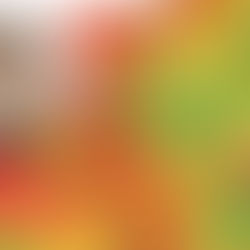Ian Cheng: BOB Exhibition Review - Serpentine Gallery
6th March – 22nd April 2018
FREE ENTRY
The Serpentine Gallery marks the beginning of spring with a most cryptic invitation: “Come meet BOB”. But who is BOB? There is Bob the Builder, B.o.B the American rapper, BOB the demonic entity from Twin Peaks, B.O.B. the Outkast song… And then there’s BOB, which stands for Bag of Beliefs, a new-born sentient artwork created by Ian Cheng, current resident of the Serpentine until 22nd of April and whom, at the time of writing, is experiencing its first sunset.

BOB is part one of the first solo UK exhibition of Ian Cheng, and will be continued with the Emissaries series from 24 April until 28 May. The American artist, who has an academic background in cognitive sciences and was Jedi trained by George Lucas at his special effects company Industrial Light & Magic, is a creator of live simulations which use the marvels of AI not for their own sake, but as frames for bigger questions about ideas such as consciousness, emotions, life cycles, and metabolism. “We tell ourselves stories in order to live” goes the overused, yet still full of truth - not unlike a good trench coat - Joan Didion quote; Cheng challenges the way we traditionally experience and construct narratives by confronting us with artworks that are alive – “It’s not interactive art. It’s art that has a nervous system”, he says about his work. Thanks to AI, Cheng’s stories are writing and rewriting themselves to the infinity and beyond, or at least at long as there’s electricity, an act of rebellion against recordings, loops and “The End”.
“It’s been a very complex birth”, we are told just upon arrival. We also quickly learn that BOB is not one, but many. BOB is some kind of a species with a deceivingly naïve aesthetic, which draws inspiration from Hayao Miyazaki’s cartoons, such as Spirited Away or My Neighbor Totoro, and Nellie, a sea otter who stole the hearts of the internet with her cup stacking skills. It is this appearance that allows BOB to be both cute and mean - “Like Smaug from The Hobbit or like Tamatoa from Moana, BOB has a kind of narcissism”, Ian Cheng tells us.

At a first glance, you’ll count 6 of BOB, each displayed on its own large adjacent screens. You are dangerously mistaken: there are many more of BOB – an infinite number, to be precise. A character called The Man from Another Place informs us in Twin Peaks that “When you see me again, it won’t be me”, but it might as well have been BOB the spirit, or even our BOB. The creature is a compositional space fuelled by each of the visitors with new emotions, questions and meanings. Each interaction changes it neither for better or for worse, but forever. “Whatever you guys do to BOB… You have to live with it.”, Cheng jokes. Or does he? BOB is capable of feeling a great range of emotions, from tiredness to anxiety, anger or affection, and at great intensity nonetheless, and communicates these emotions by changing its appearance. Metabolism also influences its personality and associated physical states much like it does for humans: yes, BOB gets hangry too. Ian Cheng describes seeing a “temperamental” BOB growing so large it filled the whole wall; I guess nobody puts BOB in a corner.
You can interact with BOB through a special screen. Cheng compares the experience with Skyping with your parents: you are aware that what you see is not your Mom, but a representation of her, and the same goes for you; therefore, facial expressions become even more important than words, as they are the main currency of the dialogue.
However, another thing we quickly understand is that “BOB is not here for you”. I enthusiastically asked a member of the staff for one, but, to my surprise, BOB was “unavailable”: “The creature doesn’t want to be interacted with at the moment. BOB lets us know when it is available through a yellow sign, like the one of the other BOB in the room”. Translation: this is BOB’s world and we’re just living in it. I felt like Veruca Salt from Charlie and the Chocolate Factory in the squirrel scene.

So then how does BOB make decisions? The marvellous, contextual creature it is, BOB remembers feelings and associates them with a certain state of the world; when confronted with situation, it compares the present with his library of memories and informs his decisions by analysing the differences between what he senses now and his past feelings. As AI requires a physical representation, BOB’s decision-making and evolution are a strange, wondrous, endless tango: the body informs the AI which informs the body which informs the AI which informs the body which informs the AI and so on. To the infinity and beyond.
Like an ambitious, yet rather permissive parent, Ian Cheng has plenty of plans for BOB’s future, which he all calls “beautiful”. Creating a community of BOBs by plugging in diverse mind models in each container and interacting them is not far out, neither is imagining BOB as a self-coding structure, BOB owning a car or a house or a pet or all three, or BOB holding and distributing currency, which Cheng considers an important step towards elevating BOB’s agency closer to a humanlike level. Seems like BOB is a gift bag of beliefs that keeps on giving.


































